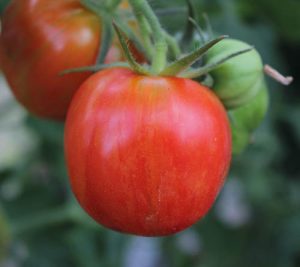
Early in the month it is time to check that the glasshouse is ready to accommodate your tender plants, so you are ready when temperatures drop.
Pick your last tomatoes and ripen them on the windowsill. Blemish free fruit can be stored in a cool drawer, to be ripened in the fruit-bowl as needed during the winter. Check stored tomatoes regularly, as you would your apples, removing any showing signs of decay and make sure the fruit are not packed so closely that they are touching each other.
Then lift and compost your tomato plants, weed through the greenhouse removing any debris, then on a warm, sunny day, clean the glass inside and out. If you use a brush and warm soapy water, rinse with clean water afterwards, then wipe over the glass with a chamois leather and ventilate the glasshouse so it dries out. Once it has done so, you can insulate the glasshouse with bubble wrap or fleece, making sure you can still open the vents and check that your greenhouse heater is working, there should be enough time to repair it if necessary, before the first frosts. It is worth having a back-up heater, too. There is nothing worse than hearing frost warnings and being unprepared. Some gardeners try to avoid the chore of bubble wrapping the whole greenhouse and prefer layers of horticultural fleece instead, which is more environmentally friendly as it saves heating the greenhouse, too. Plants that are particularly really tender plants go under the benches for added protection and I make sure the compost has almost dried out too. Ventilate the greenhouse during sunny autumn days, shutting the windows by the middle of the afternoon to trap the warm air, so it cools down slowly as the day draws on.
Cover your pond with fine netting before the leaves start to fall, to prevent smaller leaves from getting through – netting used to cover raspberries and other fruit crops is ideal and gives it another use in the garden. Use a rake or the mower to collect infected leaves as they fall, particularly those with black spot, pear scab or powdery mildew and put them in the council green waste bin.
Early in the month is also the last chance to sow hardy annuals like ‘Love-in-a Mist’, ‘Larkspur’ and ‘Poppies’, you can sow them in spring, but sowing now means stronger, earlier flowering plants. Sow them where they are to flower in borders and protect them with cloches or fleece if the weather gets really cold. In cooler areas sow them in trays, transplant them into individual pots when they are large enough to handle or when the seed leaves appear, then grow them on in a cool greenhouse or cold frame, with as much light as possible. They don’t need high temperatures, just a cool, frost-free environment. By the time they are ‘hardened off’ and planted out in their final positions in May they too will be bushier, stronger and flower earlier than spring sown plants.
Happy gardening! Matt










